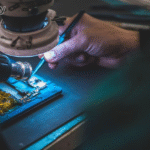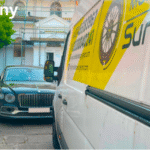In the ever-evolving world of digital media, artificial intelligence (AI) continues to redefine the boundaries of what creators can do. One of the most intriguing and popular applications in recent years is face swap technology. Originally developed as a fun feature for social media filters and meme culture, face swap has rapidly matured into a powerful tool with a wide range of applications in video editing, photo manipulation, entertainment, marketing, and beyond.
What Is Face Swap?
Face swap refers to the use of technology to digitally replace one person’s face with another in images or videos. While early versions of this technology relied on simple image overlay techniques, today’s face swapping is powered by sophisticated AI models such as Generative Adversarial Networks (GANs) and deep learning-based facial recognition systems. These models can accurately track facial expressions, lighting conditions, and head movements, resulting in seamless and hyper-realistic face replacement.
The Rise of AI in Face Swapping
AI plays a central role in advancing face swap technology. Deep learning algorithms can analyze thousands of facial data points, enabling the digital recreation of facial nuances like eye blinks, smirks, or subtle jaw movements. These improvements have propelled face swapping beyond simple image processing into the realm of deepfakes and photorealistic content.
The core AI components include:
- Facial recognition: Identifies and maps facial features.
- Machine learning: Learns the distinct characteristics of the target and source faces.
- GANs (Generative Adversarial Networks): Generate realistic swapped faces by continuously refining output against a discriminator model.
Applications of Face Swap in Digital Content Creation
- Entertainment and Film Production
Hollywood studios have adopted face swap technology for stunt doubling, aging or de-aging characters, and even recreating deceased actors. A famous example includes the resurrection of Carrie Fisher in Star Wars: The Rise of Skywalker using archived footage and AI-driven face swap. - Social Media and User-Generated Content
Platforms like Snapchat, Instagram, and TikTok popularized face swap through filters that let users trade faces with friends, celebrities, or even pets. These tools have made face swap a mainstream feature, driving user engagement and creativity. - Video Editing and VFX
Face swap tools are now being incorporated into advanced video editing suites, enabling creators to produce content that was once limited to professional studios. From parody videos to virtual try-ons, creators can apply face swap to enhance storytelling and viewer engagement. - Marketing and Advertising
Marketers use face swap to personalize content. Imagine trying on makeup or sunglasses using your own face in real time. AI face swap makes it possible, providing interactive experiences that boost consumer interest and confidence. - Gaming and Virtual Reality
In video games and VR experiences, face swap allows players to project their own faces onto avatars. This not only increases immersion but also opens doors for new forms of user interaction and personalization.
Ethical Considerations and Misuse
While face swap has numerous positive uses, it has also sparked significant ethical concerns. Deepfakes, a subcategory of face swap, have been widely criticized for enabling the creation of deceptive or harmful content. Videos portraying people saying or doing things they never did can have serious implications for privacy, reputation, and misinformation.
To combat misuse, many organizations and tech companies are investing in deepfake detection tools and promoting ethical guidelines for responsible use of AI-generated content. Additionally, governments are introducing legislation to regulate the misuse of digital manipulation technologies.
Popular Face Swap Tools and Platforms
If you’re interested in experimenting with face swap for digital content creation, here are some popular tools and platforms:
- Reface – A mobile app that lets users insert their faces into movie clips, music videos, and more.
- Zao – Known for its realistic face swaps, this Chinese app allows users to become movie characters instantly.
- DeepFaceLab – An open-source tool favored by professionals for high-quality deepfake and face swap video projects.
- FaceSwap.dev – A community-supported platform that provides resources and tutorials for advanced face swap projects.
- Adobe After Effects with Deep Learning Plugins – Offers high-end face replacement and motion tracking features for professionals.
The Future of Face Swap and AI in Creative Industries
Face swap is just the tip of the iceberg when it comes to AI’s potential in creative industries. We’re entering an era where AI-generated avatars, synthetic actors, and fully immersive virtual environments are becoming a reality. In fact, face swap may evolve into full-body swaps, allowing creators to generate hyper-realistic digital doubles for various scenarios.
Moreover, AI models are now capable of real-time face swap, which can revolutionize live streaming, virtual interviews, and even real-time translation with lip-syncing. As computational power becomes more accessible, the barriers to using these technologies will continue to fall.
Tips for Responsible Use of Face Swap
To use face swap technology ethically and effectively, consider the following best practices:
- Obtain consent: Always get permission before using someone’s likeness in face swap content.
- Disclose AI use: Be transparent when content is AI-generated or manipulated.
- Avoid harmful uses: Do not use face swap for misinformation, defamation, or identity theft.
- Use trusted tools: Opt for reputable platforms that respect user privacy and provide ethical usage guidelines.
Conclusion
Face swap technology exemplifies the fascinating intersection of AI and digital creativity. What began as a novelty has transformed into a versatile tool that is reshaping how content is created, shared, and consumed. Whether you’re a filmmaker, marketer, influencer, or just a curious creator, face swap offers an exciting window into the future of digital storytelling.







